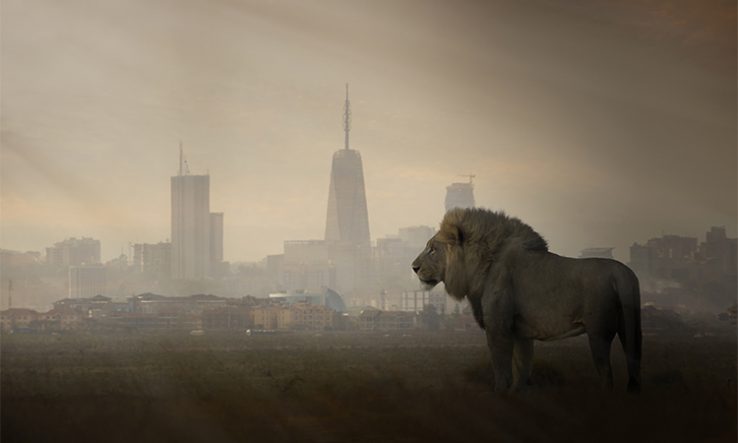
Artificial light could lead to more lion attacks and affect malaria transmission, report says
Little is known about how the rapid growth of artificial lighting across Africa will affect people’s health and its world-famous wildlife—a knowledge gap that needs to be filled, scientists say.
Vast swathes of Africa do not experience high levels of night-time artificial lighting. But this is likely to change, say the authors of a paper published on 29 March in the South African Journal of Science.
Alongside Asia, Africa is experiencing the fastest rates of urbanisation in the world. In rural areas, off-grid technologies are offering rapid electrification in areas where artificial light pollution did not previously exist.
Night-time artificial lighting has been shown to affect human and environmental health in many parts of the world. However, hardly any of this research has been carried out in Africa.
Difficult to measure
Such research is vital to assist African governments in mitigating the adverse effects of electrification, write the paper’s authors, who hail from the University of Pretoria, the South African National Parks service and the University of Exeter in the United Kingdom.
Quantifying the continent’s night-time light pollution has proved difficult, they write. For example, high levels of atmospheric dust complicates satellite measurements, while unreliable electricity grids mean light levels can be underestimated if measurements are taken during power cuts.
Moreover, a satellite commonly used to measure night-time illumination flies over Africa at 1am, when lights not kept on throughout the night are likely to be turned off.
“It is imperative that national lighting regulations are kept well updated and informed by contemporary research,” the paper’s authors write.
They call the dearth of artificial light studies in Africa “a surprising oversight”.
Lions and mosquitoes
There are countless ways that artificial light could affect Africa’s human and animal health. For example, light has been shown to modify the behaviour of disease-bearing insects, and could therefore change the transmission patterns of diseases such as malaria.
Lions are known to hunt more successfully during moonlit nights, also when attacking humans. More artificial lighting infiltrating wildlife areas, combined with increasing habitat destruction for the big cats, could lead to more human-lion encounters, the study authors write.
While information about light pollution can help African governments mitigate adverse effects, there is also a lot the rest of the world can learn from the continent, were its light pollution research to increase, the authors say.
“Africa presents a unique, and in places challenging, research environment to advance understanding of this global change driver,” they say.